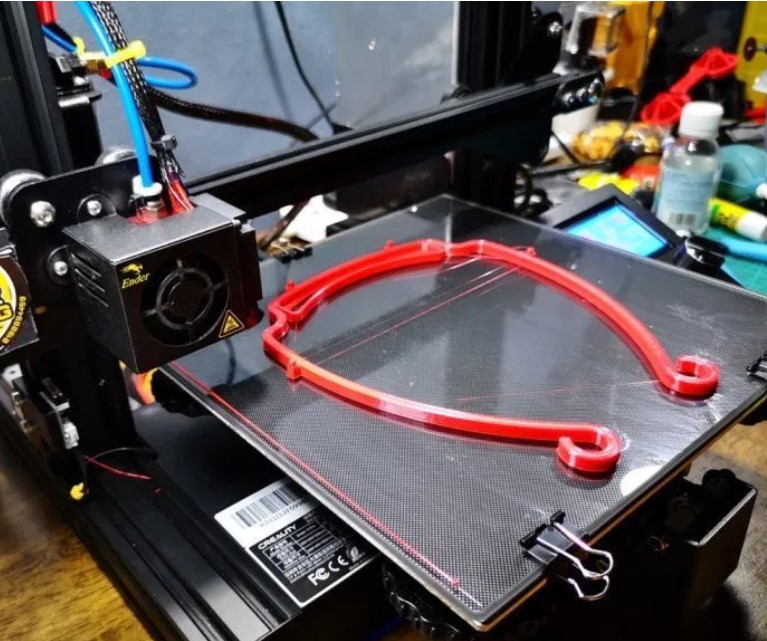As I mentioned in the original Industry 4.0 blog, nine key enablers support Industry 4.0 or Smart Manufacturing. As a reminder, the nine key enablers are listed below. Additive manufacturing will be a key enabler and is being deployed quite often right now.
Some of the key enablers of Smart Manufacturing include:
- Cyber Security/Blockchain
- Cloud Computing
- IIoT- Industrial Internet of Things
- Big Data
- System Integration
- Autonomous Robots-Cobots
- Additive Manufacturing- 3D printing
- Augmented reality
- Simulation/Digital Twins

ubergizo.com
I’m sure that we all aware that additive manufacturing or 3D printing is being used to print parts for face shields for the brave workers that are currently fighting COVID 19. It goes to show you how quickly the adoption has been for this technology that can be used in your own home letting you turn your house into a factory!
Let’s understand what additive manufacturing- often referred to as 3D printing is. Just like it sounds, additive manufacturing (AM) can use computer-directed machines to add layer upon layer of material to create complex shapes. Each layer bonds to the preceding layer of partially melted material. Additive Manufacturing can be used in many different materials such as thermoplastic, powdered metal, ceramics, glass, composites, and even food substances like chocolate. Usually, to create the complex shape that AM produces you would machine away material through milling, drilling, boring, etc.
There are seven types of additive manufacturing:
Material Extrusion
this is the form of 3D printing that you are most familiar with. Spooled polymers are extruded through a heated nozzle and added by an arm that travels horizontally. As material thickness increases by adding layers, the base of the printer moves vertically to allow for the increased thickness. This technique is being used to 3D print items as large as a house. https://youtu.be/wCzS2FZoB-I
Directed Energy Deposition
This is like material extrusion except a laser or electron beam melts metal feedstock or powdered metal. It also can use other materials as well such as polymers and ceramics.
Material jetting
A print head moves back and forth adding material as it moves. Layers harden as they cool or are cured by UV light.
Binder Jetting
Similar to material jetting with the only difference being that it alternates layers of material with layers of a binder.
Sheet Lamination
There are two types of sheet lamination. The first is called UAM or ultrasonic additive manufacturing. This entails using thin sheets of metal- think foil, and ultrasonically welding them to the layer below then machining material away where it is not needed. https://youtu.be/5s0J-7W4i6s Laminated Object Manufacturing is similar but uses paper as a material and glue to bond each layer.
Vat Polymerization
This was the very first AM method starting in 1975. Vat Polymerization creates an object in a vat of liquid resin photopolymer. A process called photopolymerization cures each layer using UV light directed by mirrors.
Powder Bed Fusion
This method uses lasers, electron beams or thermal print heads to melt fine layers of material in a 3D space. There are many types of Powder Bed Fusion techniques most of which are based upon sintering. Sintering is heating metal without liquefying it.
Just like heating toner to adhere to the paper. Direct Metal Laser Sintering (DMLS)- a laser sinters each layer of powdered metal so that the metal particles adhere to each other. Direct Metal Laser Melting (DMLM) and Electron Beam Melting (EBM) each melt the material as layers are added. These are used for more dense finished items. Years ago, I consulted with a company in Chicago named Sciaky that was working on perfecting the process for Lockheed Martin to EBM large aerospace parts. You can see an example of this here: https://youtu.be/NxwrJNWIT3E
As always it is an honor serving you and I hope that you and your company are getting better every day!
Follow me on Twitter
Join me on LinkedIn
Listen to the podcast here
